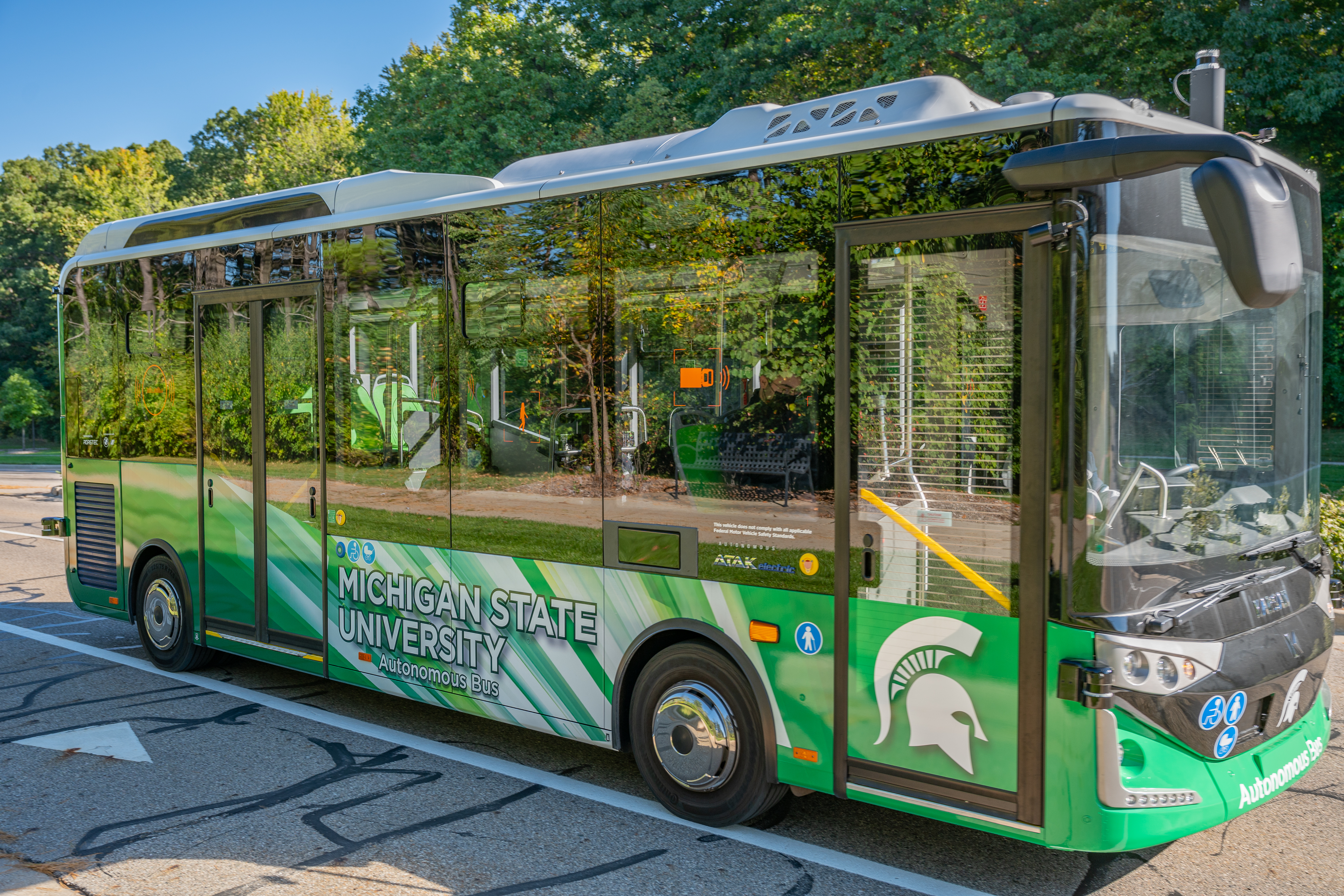MSU Autonomous Bus Concludes Spring Semester Operations
The MSU electric autonomous bus, which provided service between the Auditorium and Commuter Lot (#89), has suspended operation as of April 3. We expect to have a new autonomous bus enter service in late fall and will provide additional details on this page when they become available.
Thank you to everyone who has supported the project by riding, submitting feedback and helping make MSU a global pioneer in mobility innovation. Your involvement, even if it was just as someone who uses the Farm Lane corridor, has contributed to the university’s autonomous vehicle research and development efforts.
Its operation complemented MSU Mobility’s efforts to test, validate and research all areas of mobility via its connected ecosystem, featuring 8.1 square miles of contiguous urban, suburban, industrial and rural zones. Data collected from operating the bus includes V2I (vehicle to infrastructure) communication technologies as well as experiential learning from persons with disabilities to inform future design considerations.
For transportation in the meantime from the MSU Commuter Lot #89 please see CATA’s Spartan Service bus schedule for an alternative ride. Spin scooters are also available on campus.
Read more about the recent autonomous bus effort below.

2022-2023 Autonomous, Electric Bus Background
Students, faculty, staff and visitors were able to ride an electric autonomous bus on campus between the MSU Auditorium and the MSU Commuter Lot (#89) at the intersection of Farm Lane and Mount Hope.
The bus was made possible through a collaboration with the state of Michigan, bus manufacturer Karsan and ADASTEC, a Michigan-based company delivering advanced automated transportation platforms for full-size commercial vehicles. It represented one of the largest electric autonomous transit vehicles to be deployed on U.S. roadways to date.
In preparation for transporting riders at MSU, extensive on-campus testing was completed and validation of the bus, route and infrastructure was granted by the National Highway Traffic Safety Administration (NHTSA).
Bus safety
Autonomous vehicles are made to remove human error and are intended to offer a safer alternative to the regular driving experience. To prove the capabilities of the bus, MSU conducted extensive testing (more than 650+ tests!) and was awarded approval by NHTSA to proceed with the bus accepting riders on campus.
ADASTEC’s level four automation platform, flowride.ai (which was integrated in the bus) is packed with state-of-the-art sensor technologies including 5 Ouster LiDARs, 8 RGB cameras, 2 FLIR thermal cameras, high precision global navigation satellite systems, automotive radar and all around ultrasonic sensors. Because of this, the bus had the ability to sense and identify pedestrians, cars, cyclists, crosswalks, traffic lights and more. Plus, its integrated thermal cameras focused on improving safety and properly detecting and categorizing everything that is ‘seen’. The intuitive technology that was built into the bus autonomously and instantaneously performed tasks that were previously completed by a human driver, such as pulling into bus stops along the route, managing passengers getting on and off and navigating its way through traffic lights, roundabouts, busy intersections and more. Even in blind spots, motorcycles, pedestrians and other vehicles were visible to the e-ATAK autonomous bus and the technology remained fully functional day and night.
As an added safety measure at MSU, a human driver was on the bus at all times ready to take control if needed. Additionally, autonomous mode was not be used during adverse weather conditions (e.g. rain, snow, fog). The bus was also manually driven around roadwork zones.
Because the accuracy of the sensors could result in harsh braking in certain traffic scenarios, we required all passengers to remain seated at all times while the bus was in motion. Seat belts were also available for passengers.
Get a glimpse at how the bus sensors work here.

